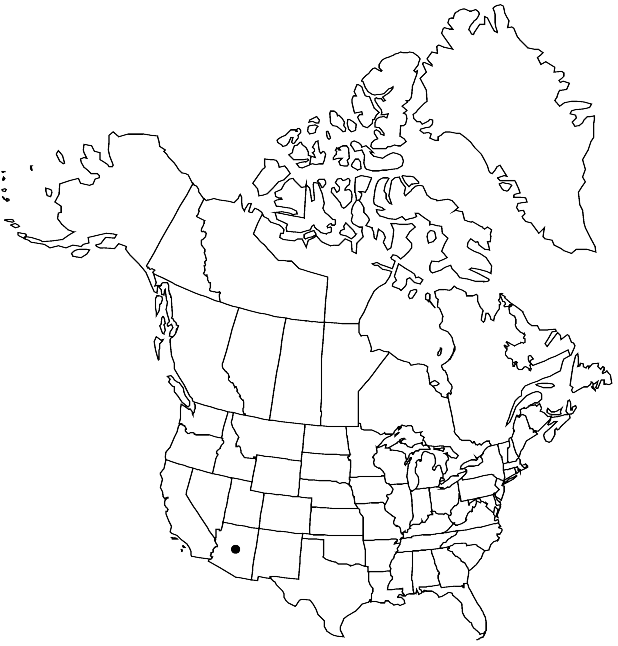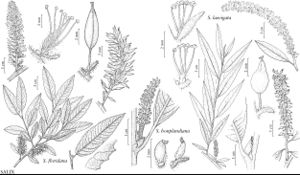Salix bonplandiana
in A. von Humboldt et al., Nov. Gen. Sp. 2(qto.): 24.
2(fol.): 20.
plates 101, 102. 1817.
Trees, 1–13 m. Stems: branches yellow-brown to red-brown, glabrous; branchlets yellowish, streaked with red or red-brown, glabrous or puberulent, nodes hairy. Leaves: (marcescent), stipules absent or rudimentary on early ones, foliaceous on late ones, apex rounded, convex, or acute; petiole (rarely with spherical glands distally), 4–16 mm, puberulent or pubescent to glabrescent adaxially; largest medial blade lorate to narrowly lanceolate, 58–155 × 7–27 mm, 4.5–10.7 times as long as wide, base cuneate to convex, margins serrulate to crenulate or entire, apex acuminate to acute, abaxial surface glabrous or glabrescent, hairs appressed, adaxial dull or slightly glossy, glabrous or pilose; proximal blade margins entire; juvenile blade glabrous, puberulent, pilose, or sparsely long-silky abaxially, hairs white. Catkins: (usually flowering throughout season and axillary, sessile), staminate 24–131 × 3–10 mm, flowering branchlet 0–12 mm; pistillate (densely to loosely flowered), 24–47 × 6–12 mm, flowering branchlet 0–10 mm; floral bract 0.6–2.2 mm, apex rounded to convex, irregularly toothed or entire, abaxially sparsely to moderately densely hairy proximally, hairs irregularly curly; pistillate bract persistent after flowering. Staminate flowers: abaxial nectary 0.2–0.6 mm, adaxial nectary oblong, square, or ovate, 0.2–0.6 mm, nectaries distinct or connate and cup-shaped; stamens 3–7; filaments hairy basally; anthers 0.3–0.5 mm. Pistillate flowers: adaxial nectary square to oblong, 0.3–0.6 mm; stipe 0.4–2.4 mm; ovary pyriform to obturbinate, beak slightly bulged below or tapering to styles; ovules 8–18 per ovary; styles 0.2–0.3 mm; stigmas (sometimes slenderly cylindrical), 0.18–0.27–0.32 mm. Capsules 3–6 mm. 2n = 38.
Phenology: Flowering Feb–Apr and throughout year.
Habitat: Riparian forests, along streams, dry washes
Elevation: 700-2000 m
Distribution

Ariz., Mexico (Baja California, Chiapas, Chihuahua, Distrito Federal, Durango, Guanajuato, Guerrero, Hidalgo, Jalisco, Michoacán, Morelos, Nuevo León, Oaxaca, Puebla, Querétaro, Sonora, Tlaxcala, Veracruz, Zacatecas), Central America (Guatemala).
Discussion
Salix bonplandiana and S. laevigata are closely related and are sometimes treated as varieties (R. D. Dorn 1994). Their ranges overlap in Arizona and in northern Baja California, Mexico.
Selected References
None.
